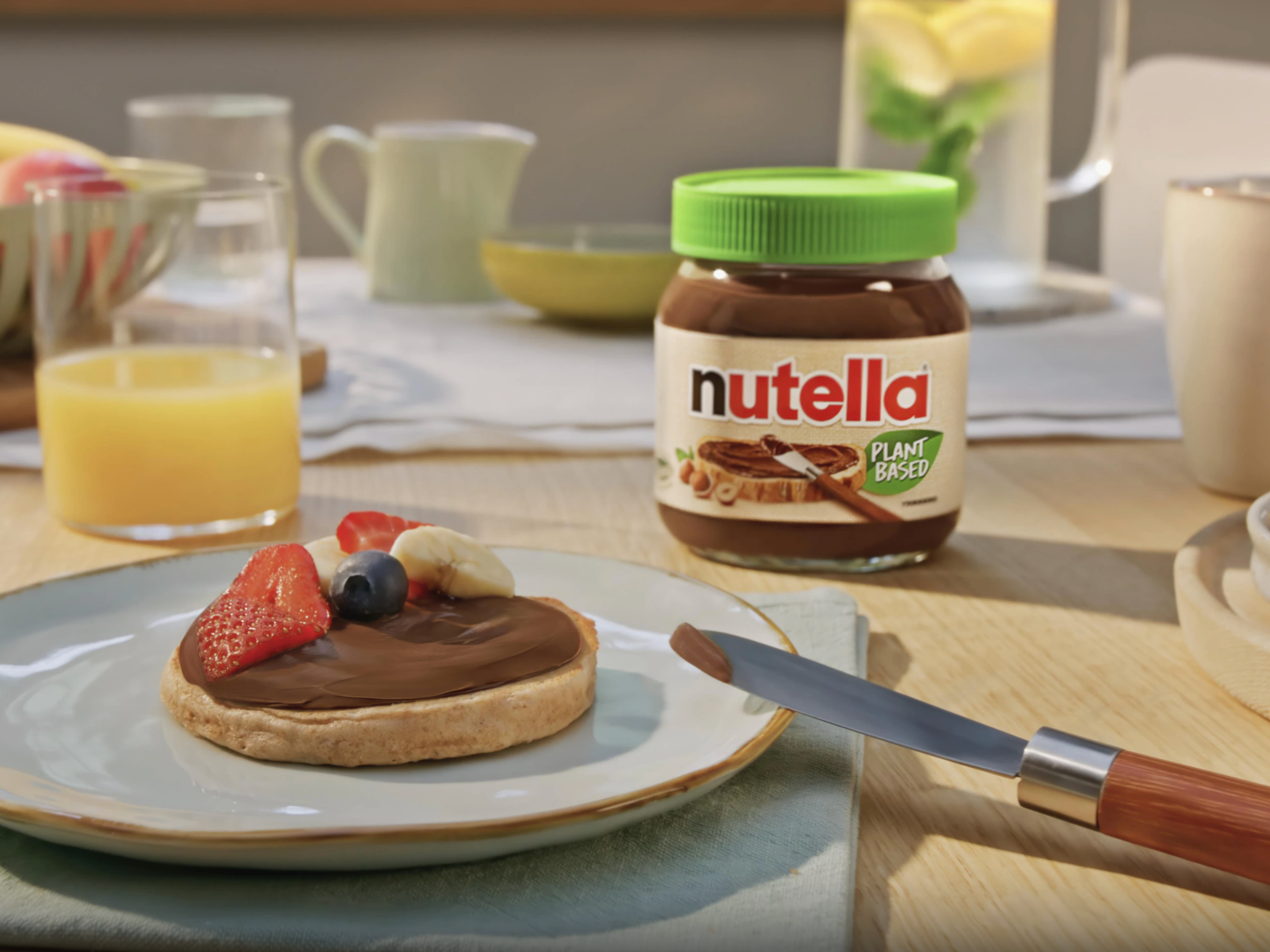Nutella Plant-Based: Everything You Need to Know As Ferrero Launches Vegan Version of Beloved Spread in Europe
7 Mins Read
Months after first announcing the move, Ferrero has at last launched a vegan version of Nutella, starting with Italy, Belgium and France.
Milk powder is out in the vegan iteration of the world’s most popular chocolate spread, with Ferrero opting to use chickpeas and rice syrup in the new Nutella Plant-Based SKU.
After years of impassioned requests from vegans across the world, the Italian confectionery giant has today (September 4) introduced vegan Nutella in supermarkets in Italy, Belgium and France. The Vegetarian Society Approved product is retailing for €4.49 and comes in a 350g jar with a light-green lid.
Marking the company’s 60th anniversary, the launch comes months after industry insiders tasted the gianduja spread at Nielsen IQ’s annual Linkontro event in Sardinia in May, six months after Ferrero filed a patent.
“At Ferrero, we are always scouting and exploring opportunities on the emerging food trends and looking for ways to meet consumers’ needs and expectations,” a company spokesperson told Green Queen.
“Within this context, Nutella Plant-Based is a delicious new option developed by Ferrero to offer the unmistakable Nutella experience to even more consumers, like those choosing to reduce or avoid animal products whether for diet (for example, vegan, lactose intolerance) or lifestyle reasons,” they added.
As vegan Nutella hits shelves in Europe, here’s everything you need to know about the spread.
What are the ingredients in the vegan Nutella?
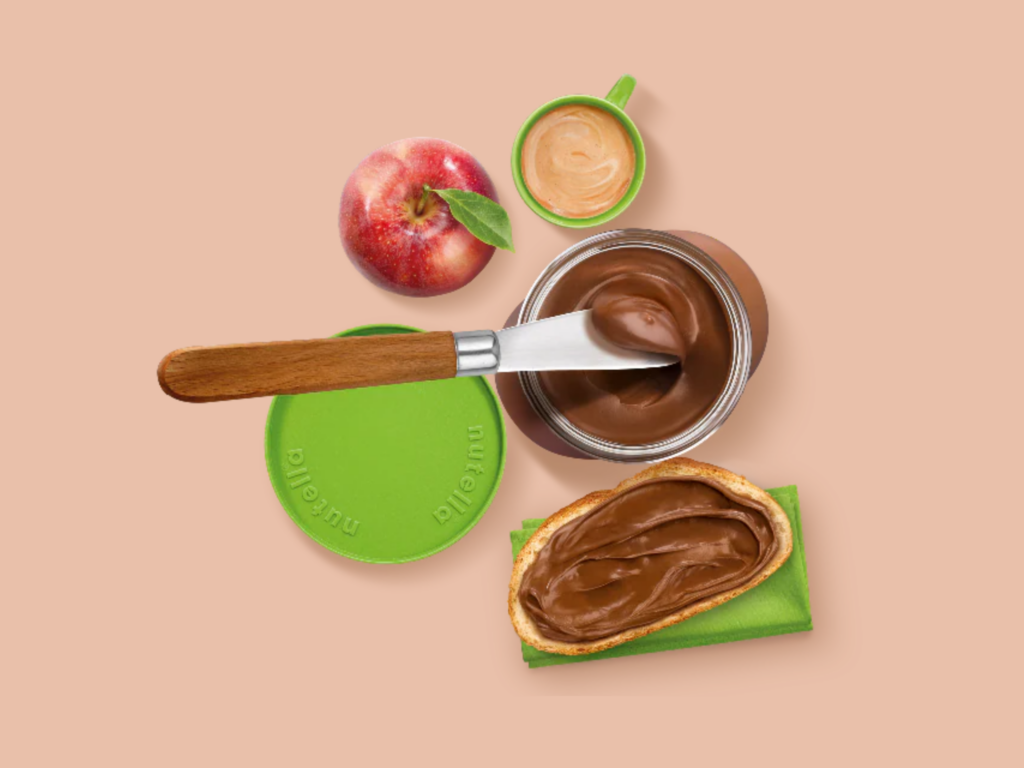
The ingredient list for Nutella Plant-Based is almost identical to the original version. Both spreads contain sugar, palm oil, 13% hazelnuts, 7.4% low-fat cocoa powder, and soy lecithin. The original Nutella contains vanillin, while the vegan label doesn’t specify what flavouring is used. Similarly, salt isn’t listed on the conventional Nutella, but it is present on the plant-based ingredient list.
The biggest difference, of course, is the dairy milk powder. In Italy, Nutella contains 8.7% skimmed milk powder made from cow’s milk, and this is what’s made the spread unsuitable for vegans. The plant-based iteration swaps the dairy for chickpeas and rice syrup powder.
That might seem like an odd combination, but it’s the result of five years of R&D at Ferrero. “Rice syrup allows you to obtain the same delicate sweetness as powdered milk, while chickpeas have such a balanced taste and texture that they integrate perfectly with the other ingredients in the recipe,” the company explains on its website.
How does Nutella Plant Based compare on nutrition?
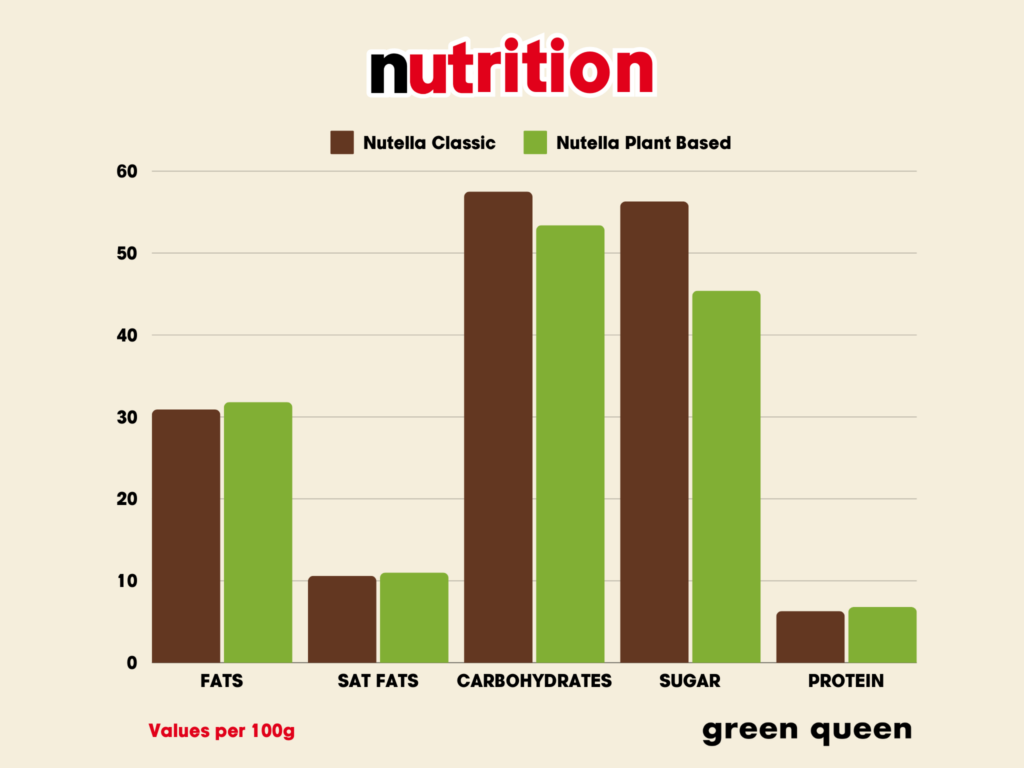
Okay, so nobody’s saying Nutella is a health food – it was never meant to be. But it’s still worth comparing the classic version with its vegan counterpart.
Most of the differences are marginal – Nutella Plant Based has 534 kcal to the original’s 539 per 100g. The vegan spread also has 0.9g more fat (31.8g per 100g), 0.4g more saturated fat, and 0.5g more protein than the conventional version.
The more notable difference is in the carb content. Despite the addition of rice syrup, vegan Nutella has 4.1g fewer carbohydrates. An even bigger gap lies in the amount of sugar in each product: Nutella Plant-Based has 45.4g per 100g, while classic Nutella contains 56.3g of sugar. It means that the dairy-free Nutella has nearly 11g less sugar per 100g.
Where is vegan Nutella produced? And is it sustainable?
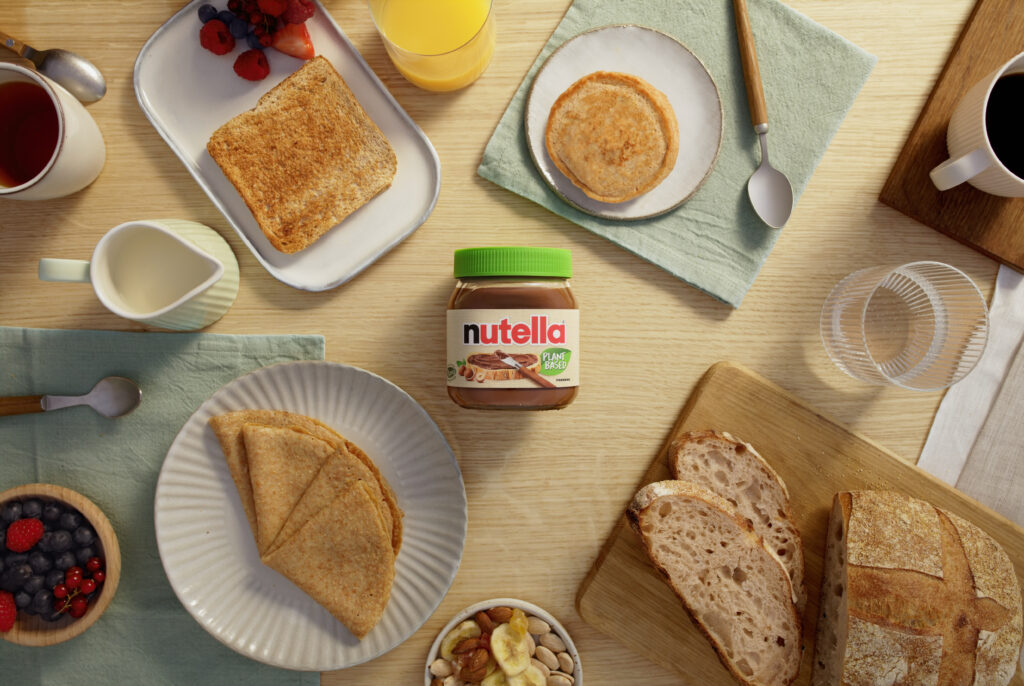
Nutella Plant-Based is being manufactured at Ferrero’s Sant’Angelo dei Lombardi factory in Italy, with the first industrial production dated June 2024. Designs for the vegan production line have been ongoing since January 2023.
It’s hard to determine how sustainable vegan Nutella is just yet, since Ferrero hasn’t released any details about this. But who says we can’t come up with some rough calculations of our own?
According to Carbon Cloud data, skimmed milk powder generates 15.5kg of CO2e per kg. Chickpeas account for a meagre 0.4kg of CO2e, and brown rice syrup comes in at 1.77kg of CO2e (there’s no Carbon Cloud date for white rice syrup).
Milk powder makes up 8.7% of Nutella, according to Ferrero’s website. Last year, the company produced 500,000 tonnes of the spread – based on our back-of-the-envelope calculations, that equates to about 659 million kg of CO2e from the milk powder alone.
Assuming that the rice syrup and chickpea have been substituted in equal measures, their combined emissions would equate to nearly 94 million CO2e for the amount of Nutella produced in 2023.
It means that by replacing dairy with chickpeas and rice syrup, the vegan Nutella could possibly reduce Ferrero’s annual production emissions for the spread by 565 million kgs of CO2e.
This is all based on a number of assumptions, of course. The real number will vary based on several factors, including where the ingredients are sourced from and the exact quantities of each ingredient.
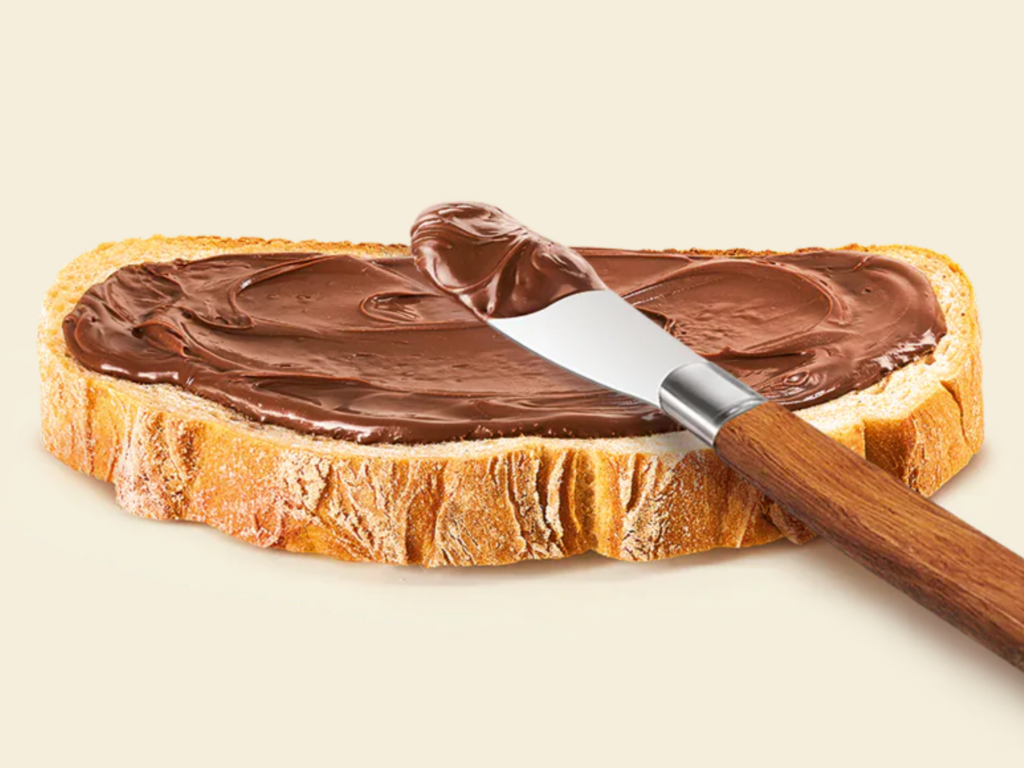
As for the use of palm oil – which is linked to widespread tropical deforestation and human rights issues – Ferrero is considered an outlier in the food industry, ranking second out of 227 countries in the WWF’s 2024 Palm Oil Buyers Scorecard. It scored 22.9 out of a maximum 24 (behind only French bakery giant Cérélia), factoring in traceability, sustainability and commitments, among other metrics.
Still, climate advocates are hoping Ferrero eventually changes course anyway. Jasmijn de Boo, global CEO at food awareness organisation ProVeg International, told Green Queen: “We hope that Ferrero will further improve their product with a sustainable alternative to [palm oil]. More ingredients sourced from Europe will also help to reassure farmers that there is demand for their crops in the plant-based market.”
What about the packaging?
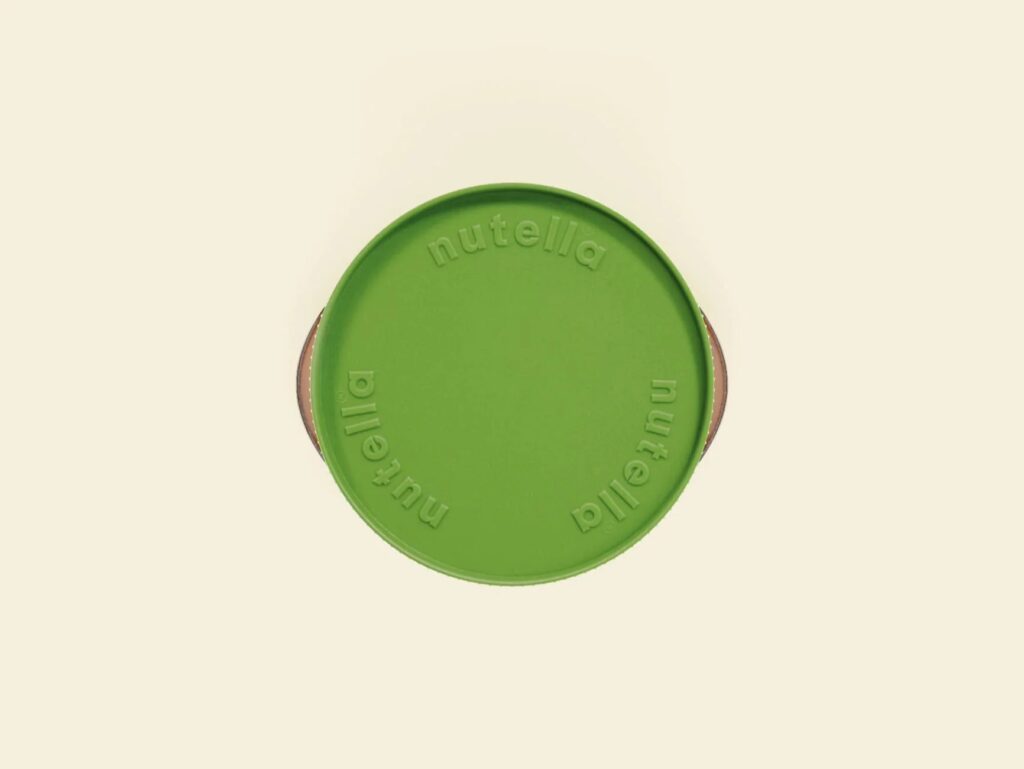
Ferrero is keeping sustainability in mind with the packaging too, with the Nutella Plant Based spread housed in a 60% recycled glass jar, alongside a recycled plastic lid derived from a mass balance approach. Here, both virgin and recycled materials are mixed during the production of the plastic.
“The process that guarantees the correct allocation of recycled materials to the Nutella caps is certified according to the ISCC standard,” the company explains on its website.
“With the ISCC certification, you are sure that at the beginning of the supply chain, an equivalent quantity of recycled materials has been inserted for each Nutella cap. One of the main advantages of the mass balance approach is the possibility of increasing the use of recycled materials in existing supply chains.”
Ferrero’s spokesperson said that the recyclable glass jar, plastic lid and paper disc can be recycled when collected in the appropriate glass, plastic and paper streams. “To preserve Nutella’s taste, we also use a protective sealing film made from a material composed of paper and aluminium,” they added.
Where else will vegan Nutella be available? And why should you care?
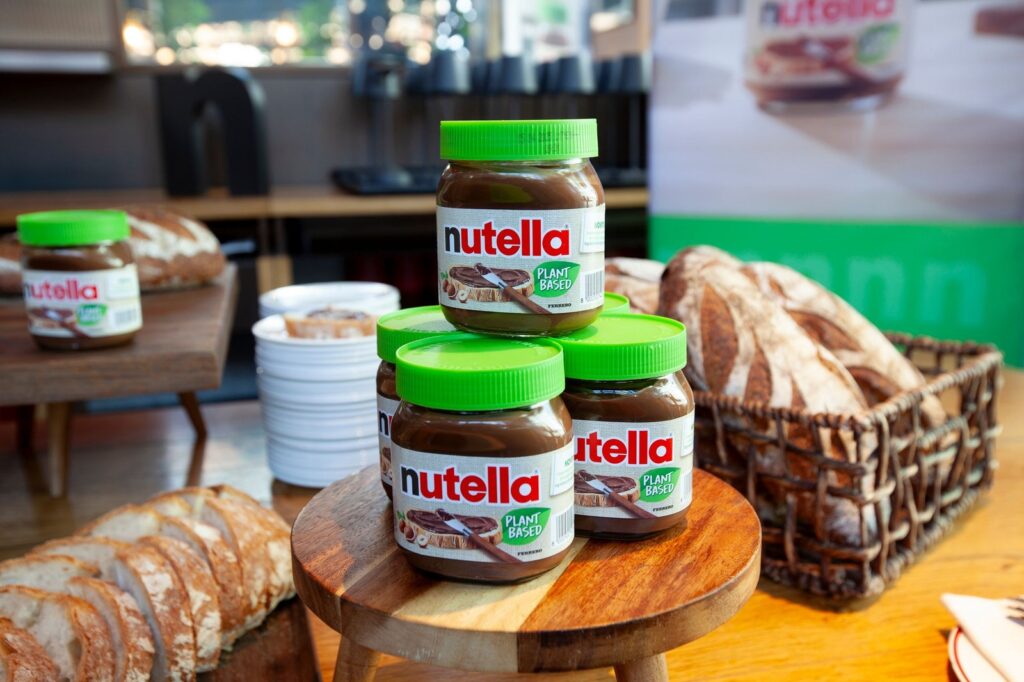
“Today, we have started launching this product in a few selected European markets, such as Italy, France and Belgium. In the future, we aim to roll out this product to more countries, taking into consideration its performance and consumers’ feedback,” the company’s representative told Green Queen.
Ferrero is reportedly planning a January 2025 launch for the vegan Nutella in Germany, coinciding with Veganuary. It has already filed a patent for the product in the country.
If you’re not vegan, lactose-intolerant or allergic to dairy, this development might not mean much to you. But Nutella is an ingredient in kitchens around the world, and its mass-market status means it’s significantly more affordable than other vegan chocolate spreads, a key factor for consumers in many countries, especially in the Global South. So Nutella Plant Based is, decidedly, a big deal.
Ferrero, through Nutella, is the market leader in spreads. Research shows that plant-based spreads will grow in value from $495M this year to $813M a decade later. For Ferrero, which made €53.2M ($58.8M) in profit in 2023, this is a ripe market there for the taking.
“Ferrero is setting an example of how taste and texture do not need to be compromised to make products containing dairy ingredients into more climate-friendly plant-based ones,” said ProVeg’s de Boo.
She is now calling on other industry giants to follow suit: “Developments in the eating habits of Europeans should add impetus to other producers of the world’s leading food brands to make plant-based versions of their products where feasible.”

